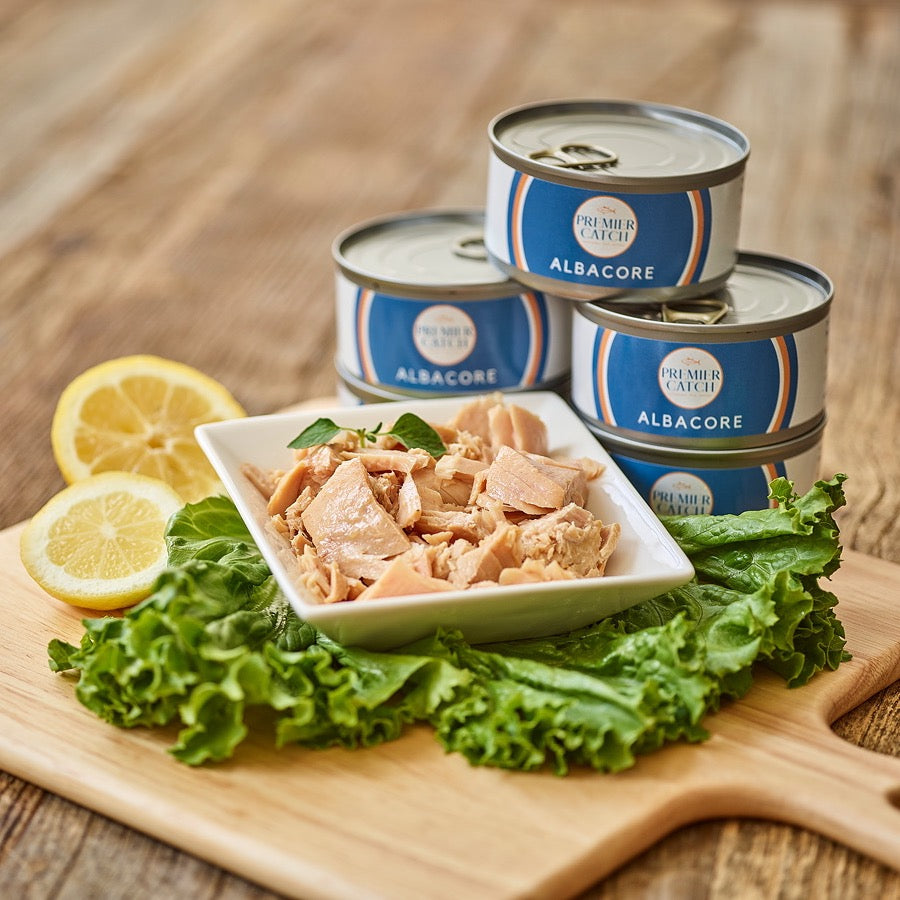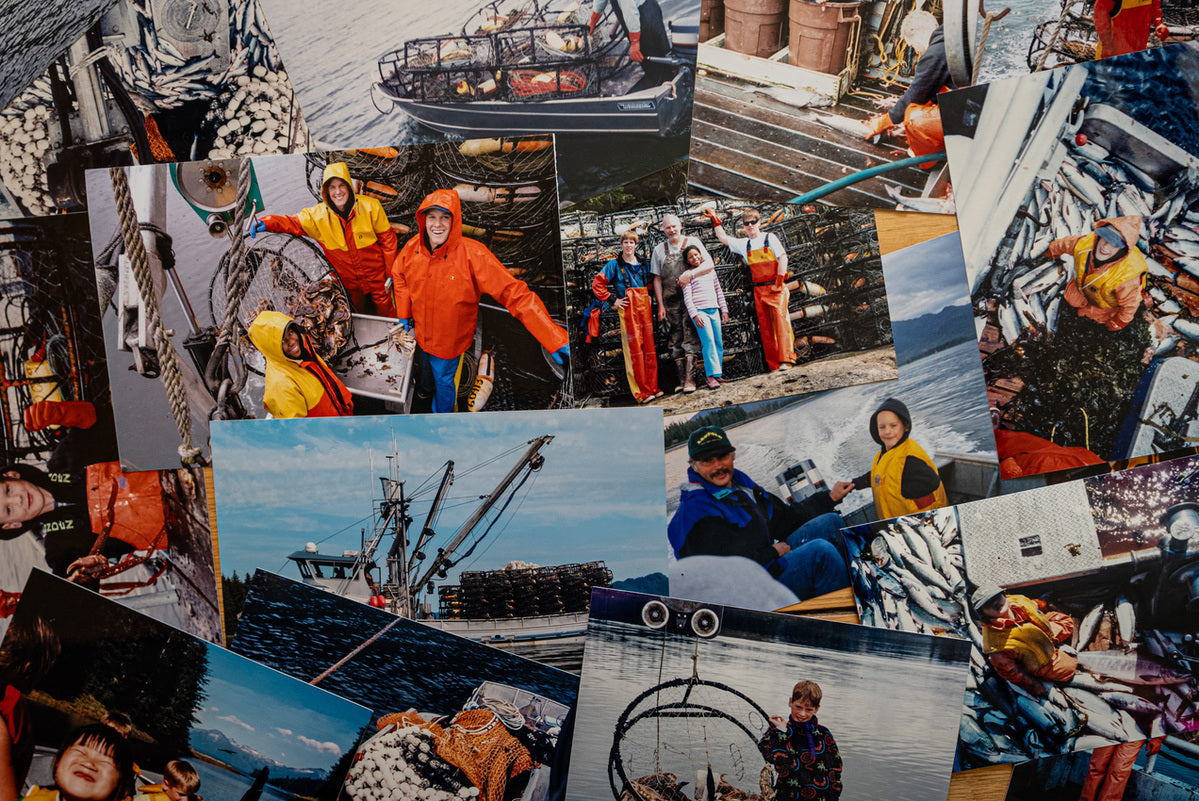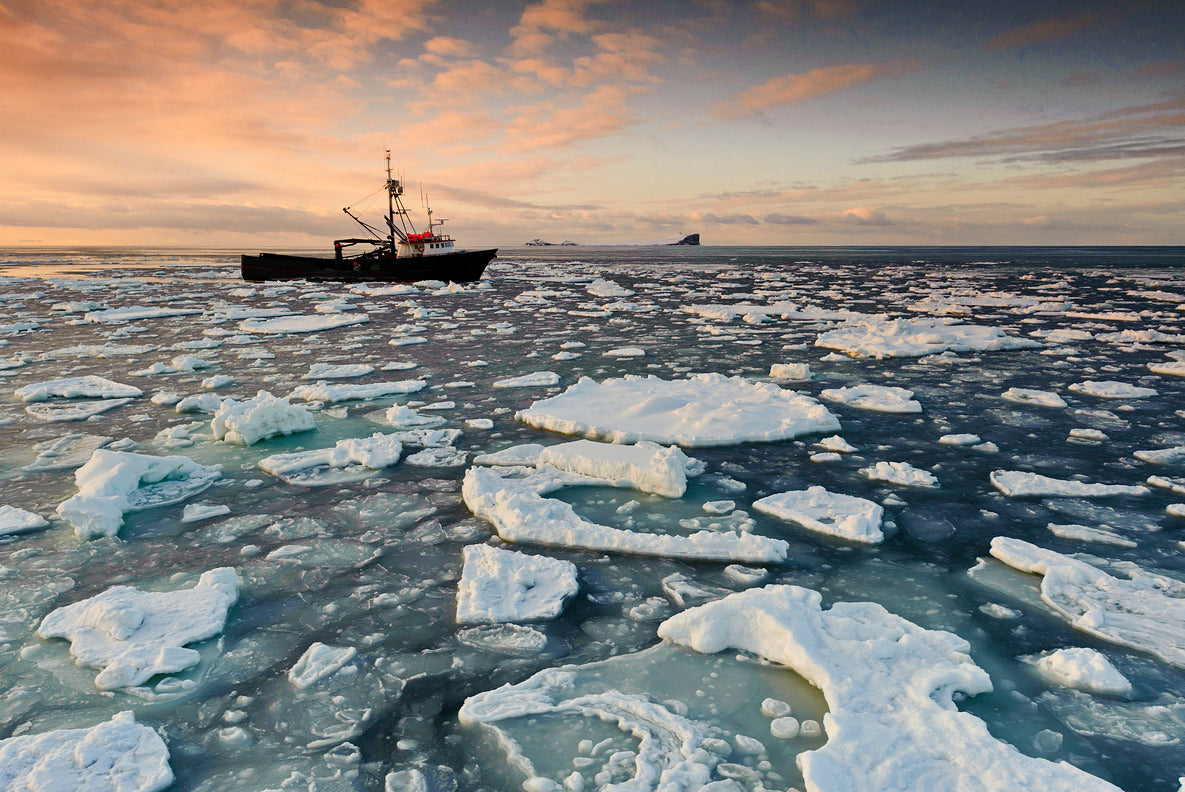At Premier Catch, we’re committed to delivering premium wild U.S. seafood that’s not only delicious and sustainably caught—but also safe and trustworthy for you and your family. One product we’re especially proud of is our wild canned albacore tuna, sourced from the pristine waters off the Pacific Northwest coast.
It’s canned by hand, using nothing but the tuna loin and a pinch of sea salt—no preservatives, no additives, no shortcuts. And because we get a lot of questions about mercury levels and shelf life, we’re breaking it all down for you here.
What Makes Our Albacore Tuna Different?
Not all tuna is created equal. While many canned tuna brands rely on large, older fish caught overseas, our tuna is troll-caught in the waters off Washington and Oregon. These are younger, smaller albacore, and that matters when it comes to mercury levels.
Lower Mercury Levels, Backed by Science
Tuna accumulate mercury over time, which means smaller, younger fish naturally have less. A study published in Environmental Toxicology and Chemistry found that troll-caught albacore from the Pacific Northwest averaged just 0.14 ppm of mercury—less than half of what’s found in most conventional canned albacore.
Because of this, our tuna consistently falls well below the FDA’s action level of 1.0 ppm for mercury in seafood. That makes it a safer choice, especially for women who are pregnant or breastfeeding, and for young children.
The EPA and FDA both classify albacore tuna as a “Good Choice,” which means it can be eaten up to once a week. But thanks to the lower mercury content in our troll-caught, U.S. wild albacore, some experts suggest it may be safe to enjoy even more frequently—depending on your dietary needs and health status.
How Much Albacore Tuna Can I Eat?
Based on EPA and FDA recommendations, most adults can safely enjoy albacore tuna once a week—but the lower mercury levels in troll-caught Pacific Northwest albacore give you a little more flexibility.
Here’s a general guideline:
-
Women (including those pregnant or breastfeeding): Up to 6 ounces, once a week
-
Men: Up to 8 ounces, once a week
-
Children (6–12 years old): Two 4.5-ounce servings per month
-
Children (under 6): One 3-ounce serving per month
Of course, everyone’s needs are different. If you eat seafood regularly or have health concerns, it’s always best to check with your doctor or a dietitian (like our co-founder Ashley!) to tailor recommendations to your lifestyle.
How Long Does Canned Albacore Last?
We get this question a lot: how long does our canned tuna last?
Our supplier tells us the shelf life is at least five years—and that’s without any chemicals or preservatives. That’s the beauty of the canning process. It locks in freshness and flavor using high heat and a vacuum seal, making it shelf-stable for years.
Other high-quality tuna brands offer similar guidance, with shelf lives ranging from 4–10 years. The key? Store it in a cool, dry place, away from direct sunlight or extreme temps. (And of course, never use a can that’s dented, rusted, or bulging.)
So whether you're stocking your pantry, prepping for emergencies, or building your weekly lunch rotation, our wild canned albacore is a clean, long-lasting choice you can feel good about.
The Takeaway
At Premier Catch, we don’t just sell seafood—we feed families. We care deeply about where our fish comes from, how it’s handled, and how it fuels your health. When you open a can of our wild U.S. albacore, you’re getting:
-
Sustainably troll-caught tuna from the Pacific Northwest
-
No preservatives, fillers, or additives—just pure tuna and sea salt
-
Lower mercury levels compared to conventional canned albacore
-
A shelf-stable, pantry-friendly protein you can trust
We believe that food should be clean, simple, and delicious—and our wild canned tuna delivers on all three.
Sources:


